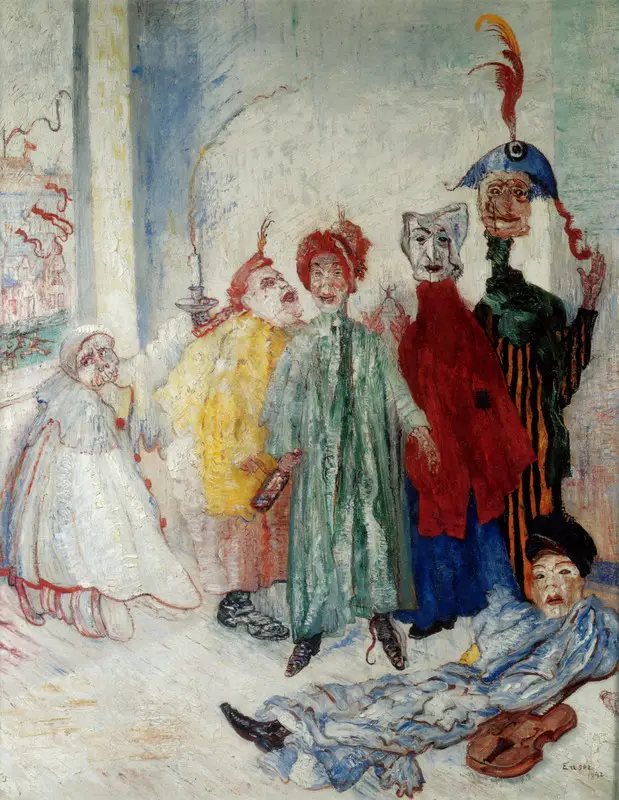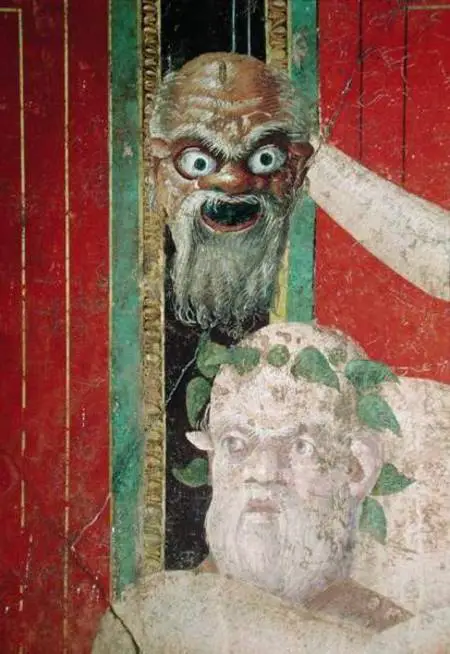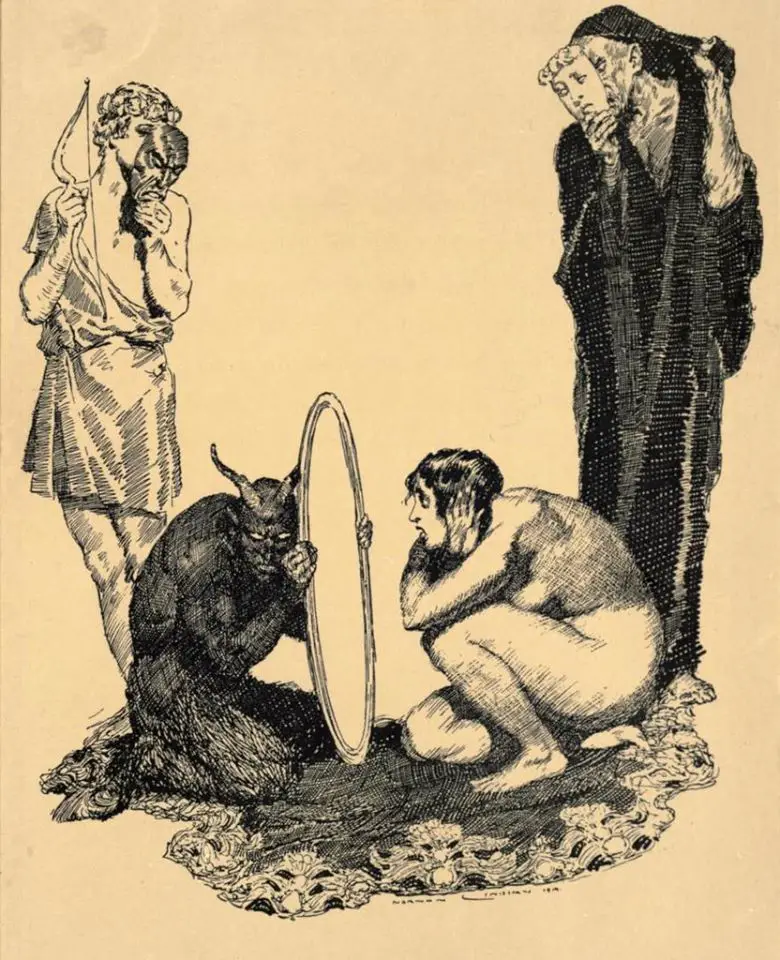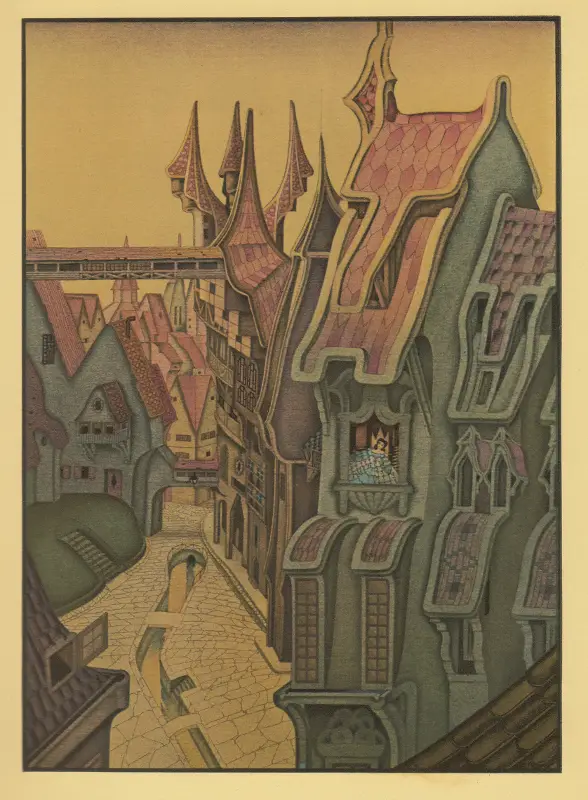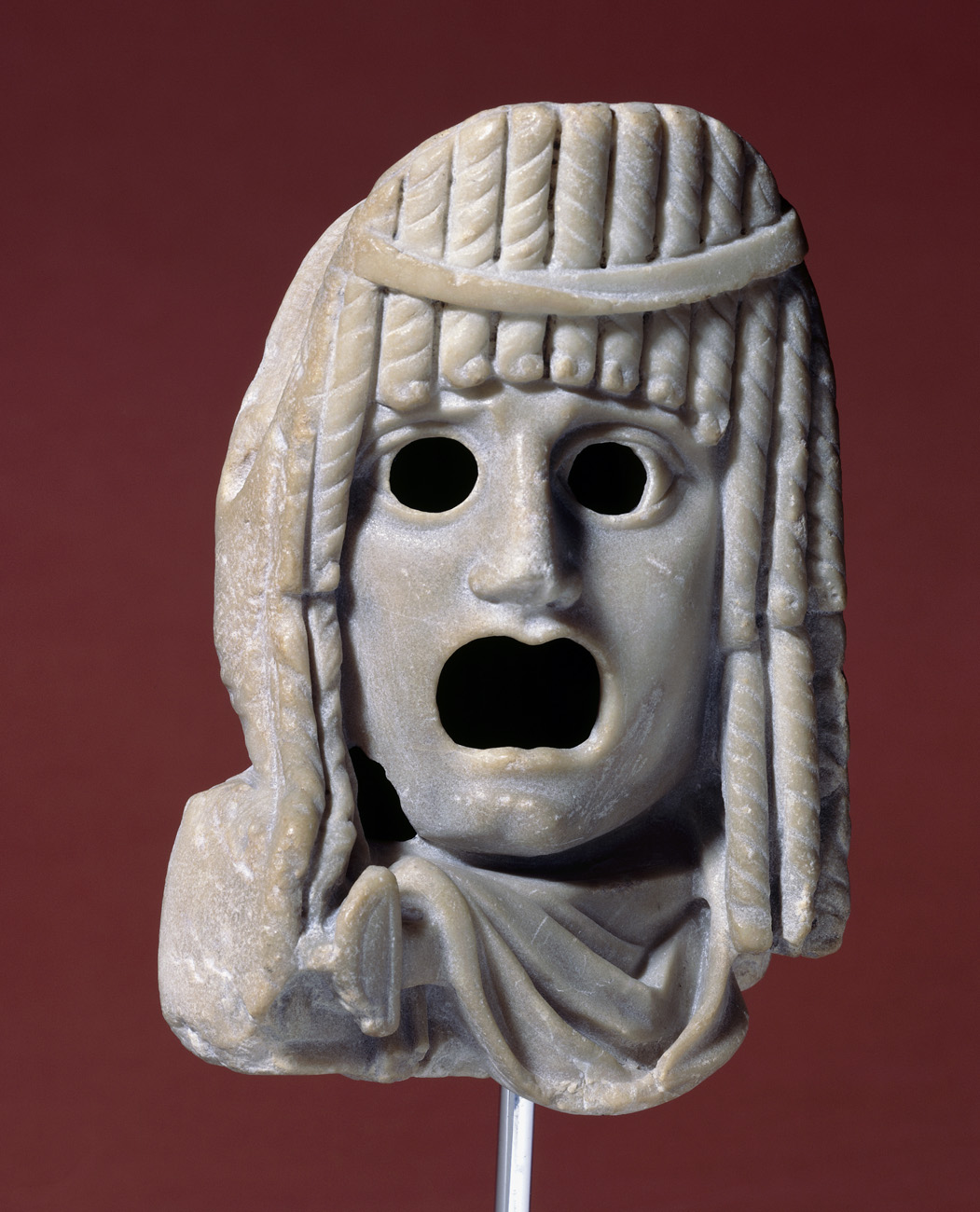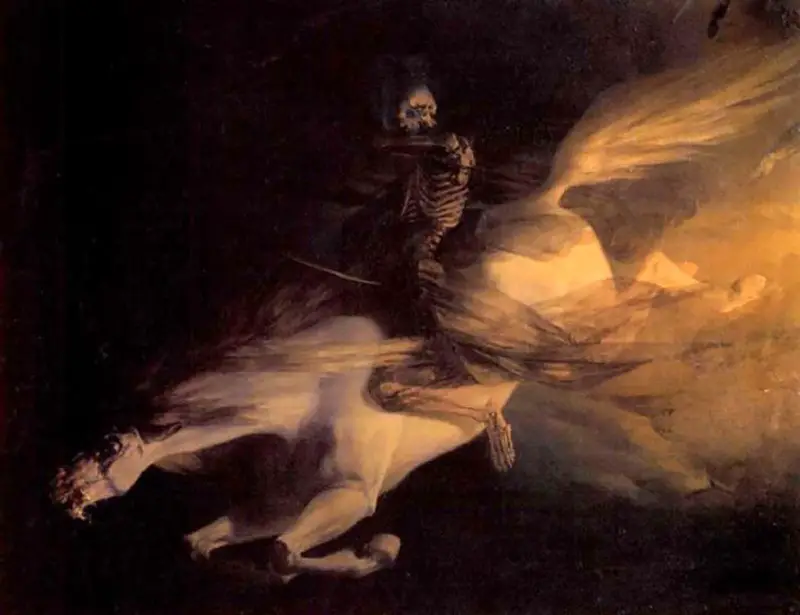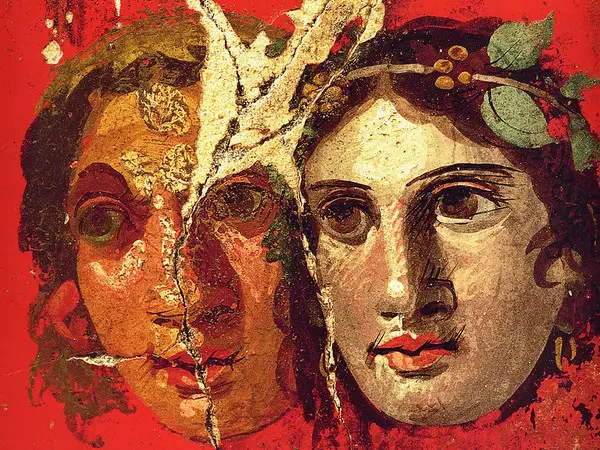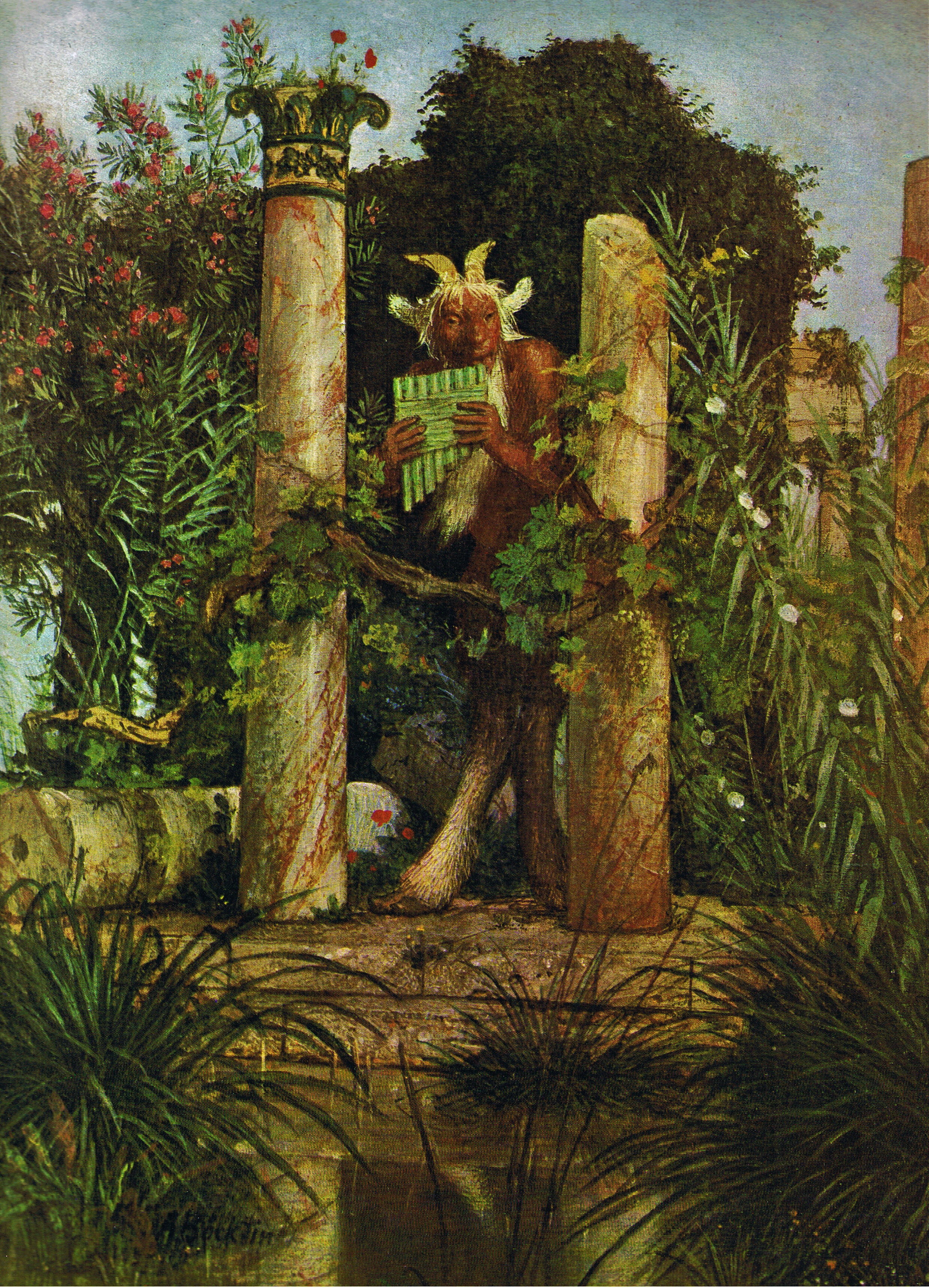Tag: Mask
The true nature of the Green Man
Ornamental motif initially in medieval miniatures, then in British and Germanic Christian architecture, the symbol of the "Green Man" is a real mystery, as although apparently born in the Christian era it undoubtedly carries 'pagan' symbolisms on the perpetual rebirth of vegetative soul of nature and of the whole cosmos.
René Guénon: "The symbolism of the theater"
It can be said that the theater is a symbol of the manifestation, of which it expresses in the most perfect way possible the illusory character; and this symbolism can be considered either from the point of view of the actor, or from that of the theater itself. The actor is a symbol of the "Self", or rather of the personality, which manifests itself through an indefinite series of states and modalities, which can be regarded as so many different parts; and it should be noted the importance that the ancient use of the mask had for the perfect accuracy of this symbolism.
Dionysus in the mirror: the mask, the Daimon and the metaphysics of the "other-than-self"
The mask and the metaphysics of the "other-than-self": the youthful initiations in ancient Rome and the Dionysian symbolisms according to Károli Kerényi and Walter Otto; L'"archetypality and paradigmatic nature of the archaic man "who, according to Mircea Eliade," recognizes himself "truly himself", only to the extent that he ceases to be "; the Daimon and the "Antithetic Mask" in WB Yeats's Vision; Dionysus in the mirror, Vishnu who dreaming creates the countless worlds and Thomas Ligotti's "solipsistic god of dreams".
The human being as multiplicity: mask, "doppelgänger" and puppet
Since modern man has dramatically realized that the unity of the human being is an illusion some of the highest minds of his consortium have sought - in a uncanny game of masks, mirrors and dolls - to understand how to integrate one's infinite personalities and overcome the existential nihilism that such masks potentially offer: from ETA Hoffmann's “The Sandman” and EA Poe's “William Wilson” to Hermann Hesse's “The Steppe Wolf”; from the contemporary cinema of Roman Polanski and David Lynch to Thomas Ligotti's "marionette metaphysics" and HP Lovecraft's "cosmic horror".
“Only masks? And the face? "
EUMESWIL
Ernst Jünger Studies Association
presents
for the cycle of meetings
« The big questions "
"Only masks? And the face? "
Eyes, puppets and doppelgänger: the "uncanny" in "Der Sandmann" by ETA Hoffmann (I)
Two centuries after its publication, ETA Hoffmann's "Man of the Sand" is still today one of the literary works indispensable for understanding the poetics of the "uncanny", destined to influence the psychoanalytic theories of Freud and Jentsch, the works of Hesse and Machen, the films of Lynch and Polanski.
"Ancient hypocrisy" and "modern hypocrisy": the mask and the "daimon"
Nine glosses (and an appendix) on the intimate meaning of “hypocrisy”, on the mask as a form of sacred discipline, on the personification of Yeats's “daimon” or anti-self; and again on the Rite, on the “Fall”, and on Love.
Hamlet, or of infinity and action
Mythical-anthropological portrait of the protagonist of one of the most paradigmatic Shakespearean plays: reflections on the Dionysian Man in front of Mælström and non-sense, on the "border" where Hamlet reigns as "Fool", on the existing dichotomy between visible-tangible and invisible -intangible.
Hellequin's Masnada: from Wotan to King Arthur, from Herla to Harlequin
Second and last part of the overview dedicated to the "mirabilia" in the medieval West, to the mythology of"Army of the dead" and the "Wild Hunt"
From Ganesha to Dionysus: dismemberment and (re) integration
From the myth of the beheading of Ganesha to that of Dionysus Zagreus quartered by the Titans, up to some brief mention of the Christian Savior: morphology of the initiatory path of the "Son of the Mother", from the "ritual dismemberment" to (re) integration in non-duality
René Guénon: "On the meaning of carnival festivals"
The unsurpassed analysis by the French esotericist on the traditional meaning of Carnival, of the "world upside down" and of masquerades
The distant origins of the Sardinian Carnival
An exciting journey to discover the link between the carnival festivities, the flagship of Sardinian folklore, and the ancestral cults that marked its past
The archaic substratum of the end of year celebrations: the traditional significance of the 12 days between Christmas and the Epiphany
di Marco Maculotti
article originally published on Atrium on 21/12/2016,
here revised and expanded
Here we aim to deepen the folkloric beliefs that have led to the configuration of two figures intimately connected to the liturgical-profane calendar of Europe in recent centuries. The two figures that interest us are those of Santa Claus (Italianized in Santa Claus) and of the Befana, figures that - as we will see - owe their origin and their symbolism to an archaic substratum, anthropologically recognizable in all those practices and beliefs (myths and rites) of the volk European (or rather eurasian), which elsewhere we have defined as "cosmic-agrarian cults" [cf. Cosmic-agrarian cults of ancient Eurasia].
From Pan to the Devil: the 'demonization' and the removal of ancient European cults
di Marco Maculotti
cover: Arnold Böcklin, “Pan, the Syrinx-Blowing”, 1827
We have previously had the opportunity to see that, in the first centuries of our era and even during the medieval era, the cd. "Rural paganism" it kept its diffusion unchanged, especially in the areas further away from the large inhabited centers. St. Maximus noted that "in the fourth century (...) the first missionaries passed from city to city and rapidly spread the Gospel over a very large area, but they did not even touch the surrounding countryside", Then adding that" even in the fifth and sixth centuries, when most of them had long since been converted, in Gaul and Spain the Church, as shown by the repeated canons of the councils of the time, encountered great difficulty in suppressing the ancient rites with which peasants from time immemorial averted plagues e they increased the fertility of the flocks and fields"[AA Barb, cit. in Centini, p.101].



